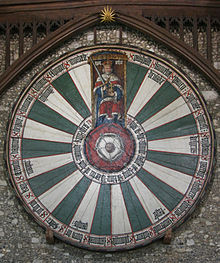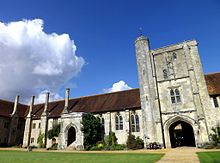Welcome to Visit Winchester Places
The Walkfo guide to things to do & explore in Winchester
![]() Visit Winchester places using Walkfo for free guided tours of the best Winchester places to visit. A unique way to experience Winchester’s places, Walkfo allows you to explore Winchester as you would a museum or art gallery with audio guides.
Visit Winchester places using Walkfo for free guided tours of the best Winchester places to visit. A unique way to experience Winchester’s places, Walkfo allows you to explore Winchester as you would a museum or art gallery with audio guides.
Visiting Winchester Walkfo Preview
Winchester was the first and former capital city of England. It developed from the Roman town of Venta Belgarum, which in turn developed from an Iron Age oppidum. The city lies at the heart of the wider City of Winchester, a local government district, at the western end of the South Downs National Park, on the River Itchen. At the 2011 census, Winchester had a population of 45,184. When you visit Winchester, Walkfo brings Winchester places to life as you travel by foot, bike, bus or car with a mobile phone & headphones.
Winchester Places Overview: History, Culture & Facts about Winchester
Visit Winchester – Walkfo’s stats for the places to visit
With 82 audio plaques & Winchester places for you to explore in the Winchester area, Walkfo is the world’s largest heritage & history digital plaque provider. The AI continually learns & refines facts about the best Winchester places to visit from travel & tourism authorities (like Wikipedia), converting history into an interactive audio experience.
Winchester history
Prehistory
The area around Winchester has been inhabited since prehistoric times. Three Iron Age hillforts, Oram’s Arbour, St. Catherine’s Hill, and Worthy Down all nearby. In the Late Iron Age, a more urban settlement type developed, known as an oppidum.
Roman period
After the Roman conquest of Britain, the settlement served as the capital (Latin: civitas) of the Belgae. At the beginning of the third century, Winchester was given protective stone walls. At around this time the city covered an area of 144 acres (58 ha) Winchester began to decline in the later fourth century.
Medieval period
Winchester appears in early Welsh literature and is commonly identified as the city of Cair Guinntguic listed among the 28 cities of Britain in the History of the Britons. The city may have functioned as a centre for a religious community or a royal palace. In 648 King Cenwalh of Wessex erected the Church of St Peter and St Paul, later known as the Old Minster. The present form of the city dates from reconstruction in the late 9th century.
Modern period

The City Cross (also known as the Buttercross) features 12 statues of the Virgin Mary, other saints and various historical figures. The city walls were originally built in the Roman period covering an area of around 138 acres (56 ha), and were rebuilt and expanded in sections over time. A large portion of the city walls, built on Roman foundations, were demolished in the 18th and 19th centuries.
Winchester landmarks
Cathedral

Winchester Cathedral was originally built in 1079 and remains the longest Gothic cathedral in Europe. It was once an important pilgrimage centre and housed the shrine of Saint Swithun. The earliest hammer-beamed building still standing in England is situated in Cathedral Close, next to the Dean’s garden.
Wolvesey Castle and Palace
Wolvesey Castle was the Norman bishop’s palace, dating from 1110. It was enhanced by Henry de Blois during the Anarchy of his brother King Stephen’s reign. Queen Mary Tudor and King Philip II of Spain were guests just before their wedding in the cathedral.
Castle

The Great Hall of Winchester Castle was built in the 12th century. It was rebuilt between 1222 and 1235 and still exists in this form. It is famous for King Arthur’s Round Table, which has hung in the hall from at least 1463.
Hospital of St Cross

Hospital of St Cross was founded by Henry de Blois in the 1130s. Since at least the 14th century, a ‘wayfarer’s dole’ of ale and bread has been handed out there. It was supposedly instigated to aid pilgrims on their way to Canterbury.
City museum
The City Museum was one of the first purpose-built museums to be constructed outside London. Early examples of Winchester measures of standard capacity are on display. In 2014 ownership of the museum was transferred to the Hampshire Cultural Trust.
Other buildings
Winchester City Mill is one of the city’s several water mills driven by the River Itchen that runs through the city centre. St Peter’s Catholic Church was built in 1924 and designed by Frederick Walters. Milner Hall was the first Catholic church to be consecrated since 1558.
Painted bollards

A series of 24 bollards on the corner of Great Minster Street and The Square were painted in the style of famous artists, or with topical scenes, by The Colour Factory between 2005 and 2012 at the behest of Winchester City Council.
Winchester geography / climate
Winchester is situated on a bed of Cretaceous lower chalk with small areas of clay and loam soil, inset with combined clay and rich sources of fuller’s earth.
Climate
Winchester experiences an oceanic climate (Köppen Cfb) as with the rest of the UK. The nearest Met Office station is in Martyr Worthy, just outside the city.
Suburbs
Aside from the city centre, there are several suburbs and neighbourhoods within the city, including several suburbs. The city centre is located in the centre of the city.
Why visit Winchester with Walkfo Travel Guide App?
![]() You can visit Winchester places with Walkfo Winchester to hear history at Winchester’s places whilst walking around using the free digital tour app. Walkfo Winchester has 82 places to visit in our interactive Winchester map, with amazing history, culture & travel facts you can explore the same way you would at a museum or art gallery with information audio headset. With Walkfo, you can travel by foot, bike or bus throughout Winchester, being in the moment, without digital distraction or limits to a specific walking route. Our historic audio walks, National Trust interactive audio experiences, digital tour guides for English Heritage locations are available at Winchester places, with a AI tour guide to help you get the best from a visit to Winchester & the surrounding areas.
You can visit Winchester places with Walkfo Winchester to hear history at Winchester’s places whilst walking around using the free digital tour app. Walkfo Winchester has 82 places to visit in our interactive Winchester map, with amazing history, culture & travel facts you can explore the same way you would at a museum or art gallery with information audio headset. With Walkfo, you can travel by foot, bike or bus throughout Winchester, being in the moment, without digital distraction or limits to a specific walking route. Our historic audio walks, National Trust interactive audio experiences, digital tour guides for English Heritage locations are available at Winchester places, with a AI tour guide to help you get the best from a visit to Winchester & the surrounding areas.
“Curated content for millions of locations across the UK, with 82 audio facts unique to Winchester places in an interactive Winchester map you can explore.”
Walkfo: Visit Winchester Places Map
82 tourist, history, culture & geography spots
Winchester historic spots | Winchester tourist destinations | Winchester plaques | Winchester geographic features |
| Walkfo Winchester tourism map key: places to see & visit like National Trust sites, Blue Plaques, English Heritage locations & top tourist destinations in Winchester | |||
Best Winchester places to visit
Winchester has places to explore by foot, bike or bus. Below are a selection of the varied Winchester’s destinations you can visit with additional content available at the Walkfo Winchester’s information audio spots:
 | Sir John Moore Barracks, Winchester Sir John Moore Barracks is a military installation near Winchester. It is located on the outskirts of Winchester and near the city of Winchester. Sir John Moore Barracks is one of the largest military bases in the world. |
 | Littleton and Harestock Littleton and Harestock is a civil parish in the City of Winchester district of Hampshire. It is 1,300 acres (5.3 km) in size, and is home to around 2,900 people. The population of the civil parish at the 2011 Census was 3,577. |
 | St Peter’s Church, Winchester St Peter’s Church is a Roman Catholic church in Winchester, England. It was built in 1924 and designed by Frederick Walters in the Gothic revival style. It is situated on Jewry Street, next to Milner Hall, in the centre of Winchester. |
 | City of Winchester The City of Winchester is a local government district in Hampshire with a city status. The district was formed on 1 April 1974, under the Local Government Act 1972, by the merger of Droxford Rural District and part of Winchester Rural District. The 2011 Census recorded the population of the district as 116,600, with a total area of 255.2 square miles. |
 | The Rifles Museum The Rifles Museum is located in Winchester in Hampshire, England. It is part of Winchester’s Military Museums. The museum is the regimental museum of the Rifles. |
 | Lower Barracks Lower Barracks was a military depot of the Royal Hampshire Regiment from its formation in 1881 until it moved out in 1959. It is one of several independent museums that comprise Winchester’s Military Museums. |
 | Peninsula Barracks Peninsula Barracks are a group of military buildings in Winchester, Hampshire. They are located in the Peninsula area of the Peninsula Peninsula. They were built in the 1950s and 1960s. |
 | Winchester Guildhall Winchester Guildhall is a Grade II listed building in Winchester, Hampshire. It is a municipal building in the High Street, Winchester, and is located in the town’s High Street. |
 | Rout of Winchester In 1141, the army of imprisoned King Stephen of England faced the forces of Empress Matilda and her cousin. Her forces were commanded by her half-brother Robert of Gloucester. The Angevin army gave up the siege and was crushed as it began to retreat. |
 | Winchester City F.C. Winchester City Football Club play in the Southern Football League Division One South. Craig Davis is the current manager of the club. The club motto is “Many in Men, One in Spirit” |
Visit Winchester plaques
![]() 20
20
plaques
here Winchester has 20 physical plaques in tourist plaque schemes for you to explore via Walkfo Winchester plaques audio map when visiting. Plaques like National Heritage’s “Blue Plaques” provide visual geo-markers to highlight points-of-interest at the places where they happened – and Walkfo’s AI has researched additional, deeper content when you visit Winchester using the app. Experience the history of a location when Walkfo local tourist guide app triggers audio close to each Winchester plaque. Explore Plaques & History has a complete list of Hartlepool’s plaques & Hartlepool history plaque map.